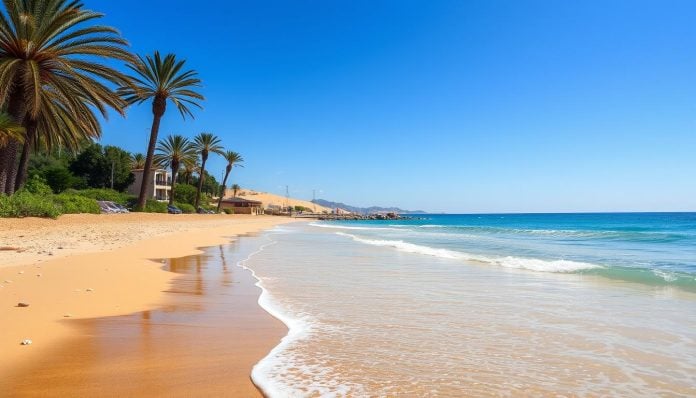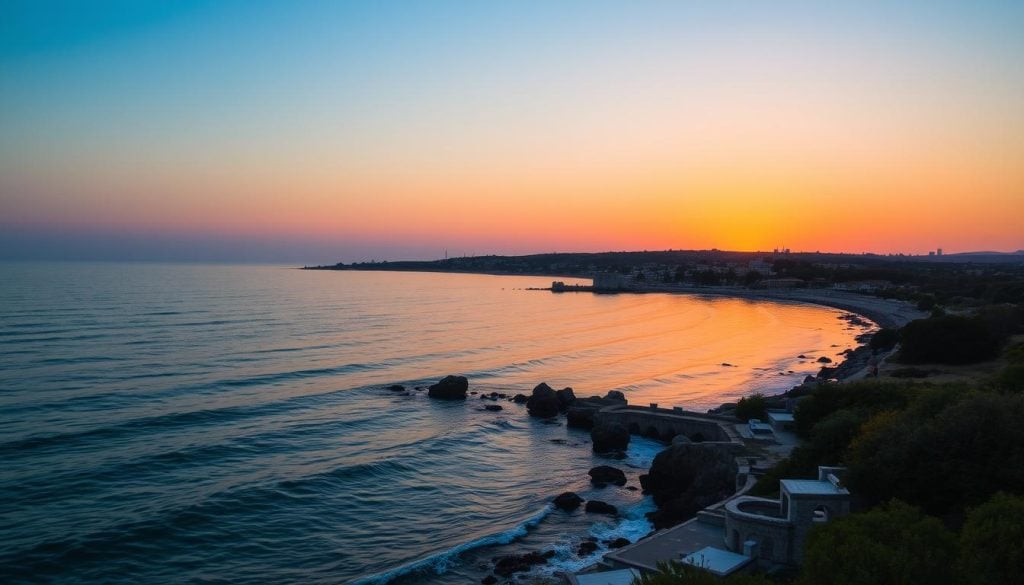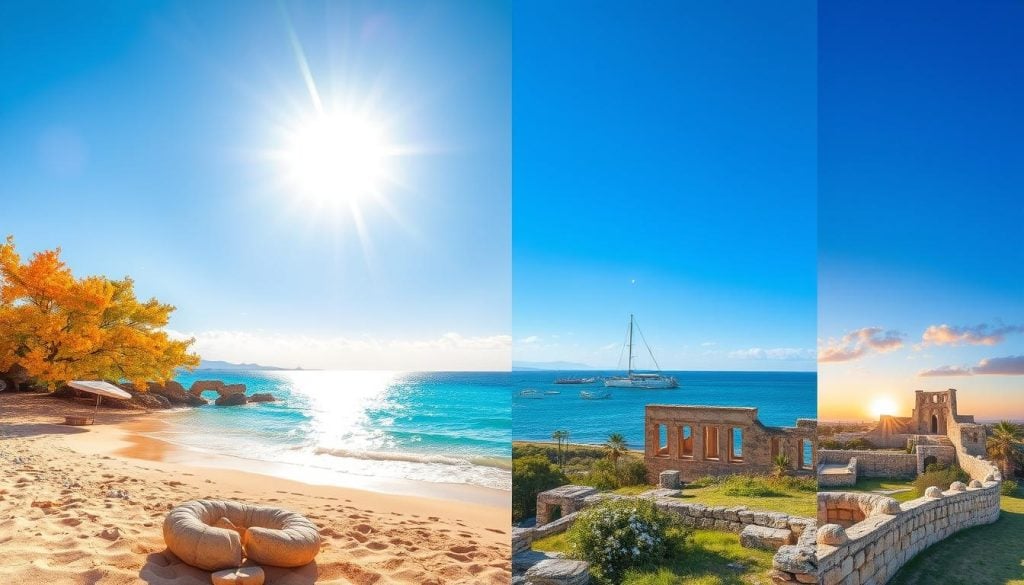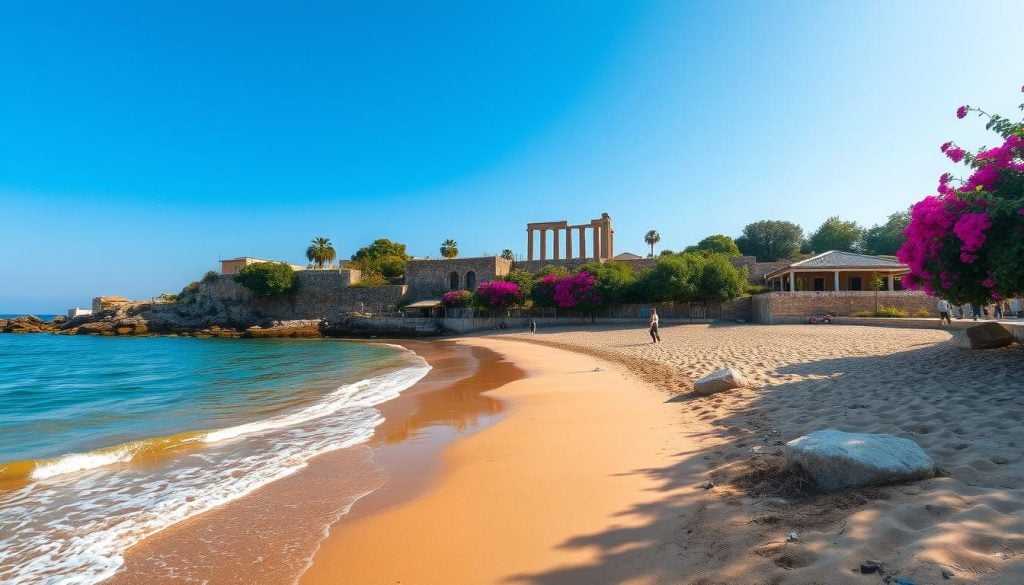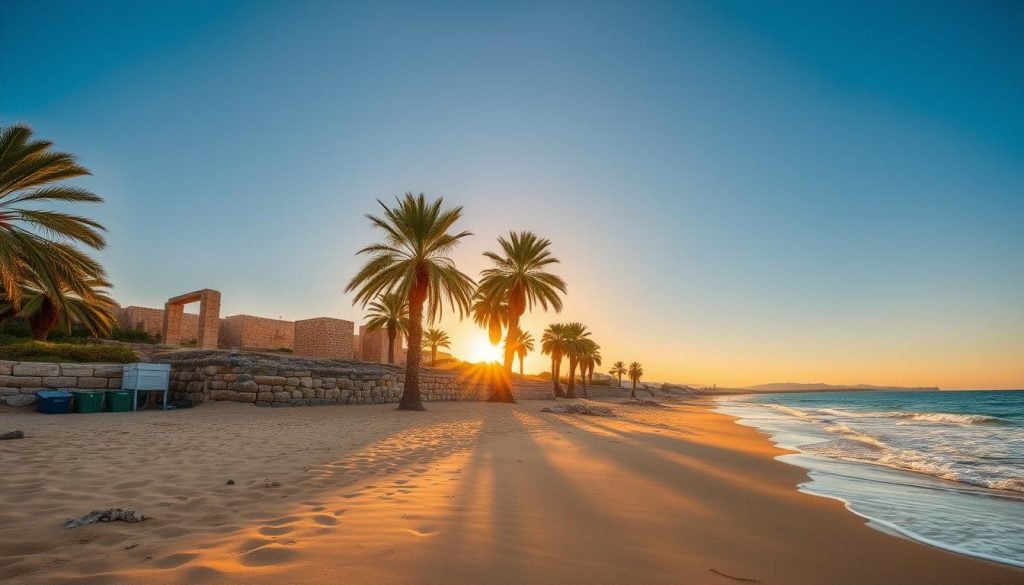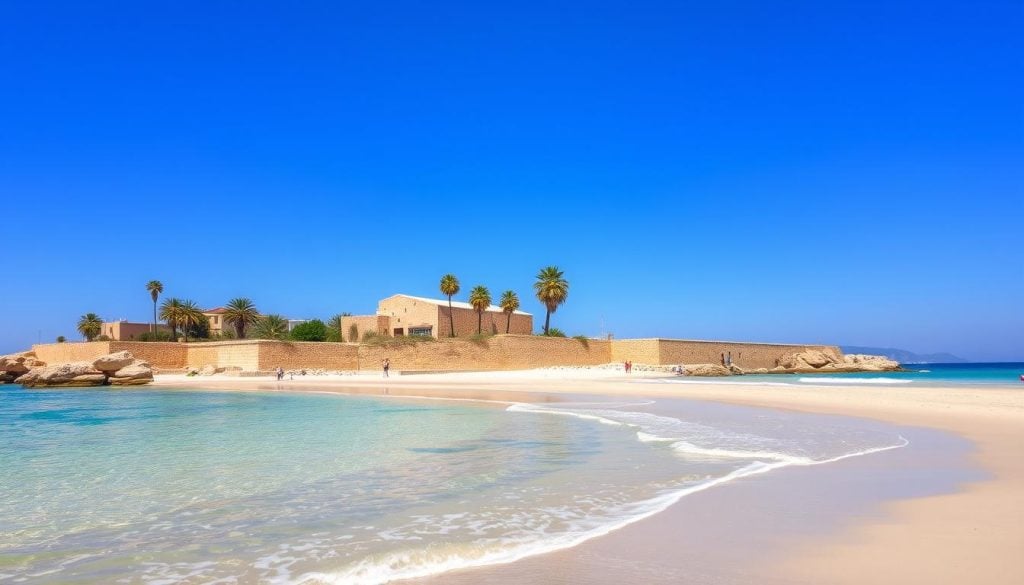Ever thought about the *best time to visit Famagusta* for nice weather and fewer people? Located on Cyprus’s eastern coast, Famagusta is known for its history, architecture, and beaches. But, to really enjoy it, you need to pick the right time.
A detailed Famagusta weather guide suggests late spring and early fall as the best times. These periods offer pleasant temperatures and fewer tourists. This makes your visit peaceful and enjoyable.
Understanding Famagusta’s Climate
Famagusta has a wonderful Mediterranean climate. It draws visitors with its special weather. Knowing the Famagusta weather trends helps plan your trip.
Summer in Famagusta is lively, with hot, dry weather. July and August can be very hot, over 86°F (30°C). It’s great for beach lovers, but expect more people at the beach.
Winter, from December to February, is milder. Daytime highs are about 60°F (15°C). It’s good for those who like cooler weather. But, many places might be closed because of fewer tourists.
With this info, you can choose the best time for your visit. Whether you want summer fun or a quiet winter, knowing the climate helps.
| Season | Temperature (°F) | Characteristics |
|---|---|---|
| Summer | 86°F and above | Hot and dry, ideal for beach activities |
| Winter | Average 60°F | Mild and cooler, fewer tourists |
Seasonal Breakdown of Famagusta’s Weather
Knowing the seasons in Famagusta is key for planning your trip. The Famagusta weather guide shows four seasons, each with its own charm.
Spring, from March to May, is lovely. You’ll see wildflowers blooming and enjoy temperatures in the mid-70s Fahrenheit. It’s perfect for outdoor fun and scenic views.
Summer, from June to August, is the busiest time. It gets very hot, with temperatures over 90 degrees Fahrenheit. The lively vibe attracts many, but expect crowded spots and higher costs. It’s great for beach days and social events.
Fall, from September to November, is similar to spring. It has pleasant temperatures and fewer crowds. This makes it easier to explore without the rush.
Winter, from December to February, is cooler but still mild, around 60 degrees Fahrenheit. It rains more, which might cut down on activities. But, it’s quieter for those who like peace and are okay with rain.
| Season | Months | Average Temperature (°F) | Visitor Experience |
|---|---|---|---|
| Spring | March – May | Mid 70s | Blooming flowers and comfortable weather |
| Summer | June – August | Above 90s | Busy beaches and higher prices |
| Fall | September – November | Mid 70s | Fewer crowds and beautiful scenery |
| Winter | December – February | Around 60 | Mild weather with occasional rain |
Best time to visit Famagusta for pleasant weather and fewer crowds?
Visiting Famagusta at the right time can be a refreshing escape from the busy tourist season. The weather is key for enjoying outdoor activities and cultural experiences.
Exploring Late Spring
Late spring, especially in May and early June, is a great time to visit Famagusta. The weather is warm but not too hot, making outdoor activities comfortable. You can hike or explore historical sites without feeling too hot.
Cultural events, like the Bellapais Music Festival, draw smaller crowds. This means you can dive into local traditions without feeling overwhelmed.
Benefits of Early Fall
Early fall, from September to October, is another good time to visit Famagusta. The weather is still nice, and fewer tourists come because students are back in school. This off-peak time lets you enjoy local sights and nature without the summer rush.
| Season | Temperature (°C) | Crowd Level | Activities |
|---|---|---|---|
| Late Spring | 20-25 | Medium | Hiking, Festivals |
| Early Fall | 23-28 | Low | Sightseeing, Nature Walks |
Off-Peak Travel: Advantages and Opportunities
Famagusta off-peak travel offers a unique experience. It’s perfect for those who want peace and beauty. Visiting in late spring and early fall lets you connect deeply with the local culture.
Traveling off-peak means you save a lot. Significantly lower accommodation rates are a big plus. You can stay comfortably without spending too much.
Attractions are also quieter, making them more enjoyable. You can explore Famagusta’s history and nature without the usual crowds. Enjoy landmarks like the ancient city walls and beautiful beaches at your own pace.
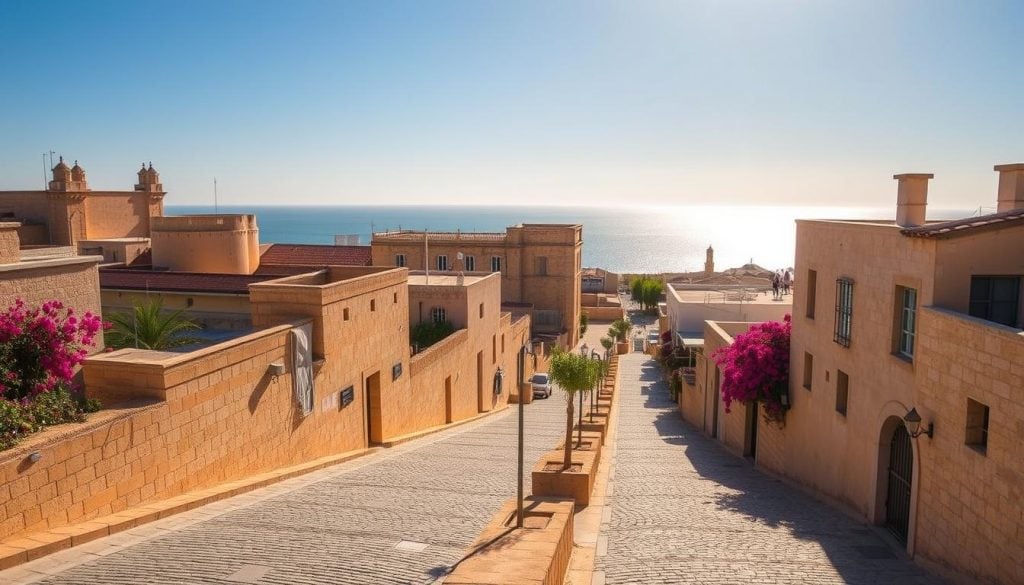
Local businesses offer special deals to off-peak visitors. Restaurants and shops give discounts. This lets you enjoy local food and find unique souvenirs without breaking the bank.
Off-peak travel in Famagusta also means more chances to meet locals. With fewer tourists, you can talk to residents, learn about their traditions, and experience real local life.
Events and Festivals in Famagusta
Visiting Famagusta during its vibrant events and festivals is a unique experience. It showcases the city’s rich heritage. Various festivities align perfectly with the Famagusta tourist season, making this an opportune time for culture enthusiasts.
Engaging in these celebrations will deepen your understanding of local customs and traditions. It will also enhance your travel experience.
Cultural Festivals in Shoulder Season
Famagusta hosts numerous cultural festivals, especially in the shoulder seasons. One highlight is the International Famagusta Art & Culture Festival. It features performances, exhibitions, and hands-on workshops.
These events celebrate the city’s artistic legacy and foster connections among artists and audiences. If you seek local charm, be sure to check the festival dates during your stay for a truly immersive experience.
Religious Celebrations and Local Customs
Religious festivals are integral to Famagusta’s cultural landscape. Significant celebrations, such as Easter and Ramadan, offer a glimpse into the island’s diverse traditions. You will find local customs are deeply rooted in community spirit.
Fostering connections among residents and visitors alike. Joining in these celebrations provides an opportunity to savor local cuisine and witness traditional practices. It enriches your Famagusta travel tips.
Travel Tips for Visiting Famagusta
Exploring Famagusta can be better with some key travel tips. Booking your stay early is important, especially when many people are traveling. This way, you get a good place to stay and avoid any last-minute problems.
Getting a car lets you see more of the area. You can drive to historic sites and lovely beaches that are close by. Famagusta’s stunning coastlines are a must-see.
Don’t forget sunscreen and water, especially for outdoor fun. The Mediterranean sun can get hot, so staying hydrated is key. Also, learning about local customs helps you connect with the friendly locals, making your trip even better.
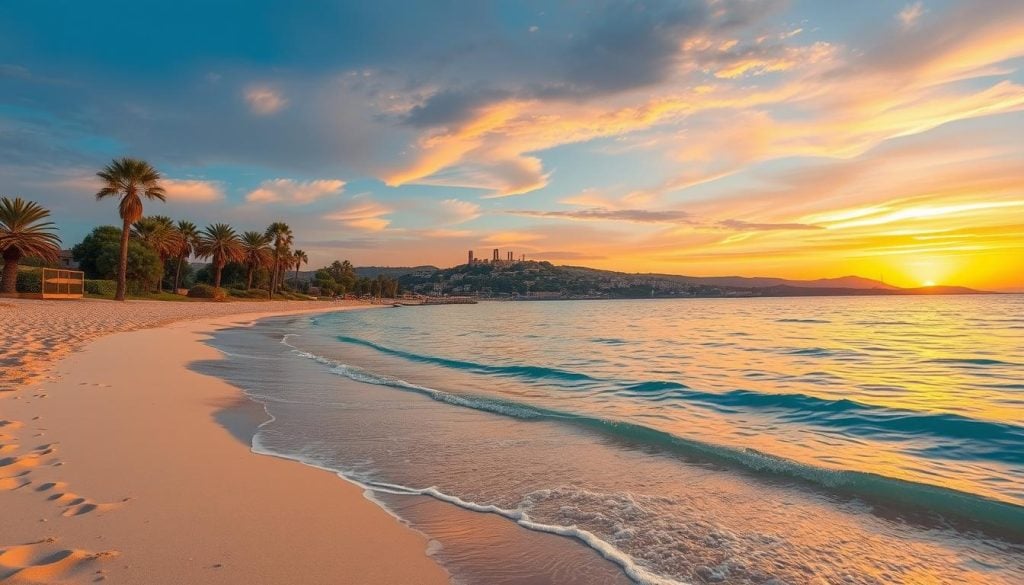
| Tip | Description |
|---|---|
| Advance Booking | Book accommodations early to secure your desired location and price. |
| Car Rental | Consider renting a car for easier access to attractions outside the city. |
| Stay Hydrated | Carry sufficient water and sunscreen to protect yourself from the sun. |
| Learn Local Customs | Understanding local traditions can enhance your cultural experience. |
Navigating Famagusta’s Tourist Season
Knowing when to visit Famagusta can make your trip better. The busiest months are July and August. Expect lots of people and higher prices for places to stay and eat.
Traveling in the shoulder seasons, like May to June or September to October, has its perks. You’ll see fewer tourists at historical sites and beaches. Plus, you might find cheaper hotels and activities.
Stay updated on local events and festivals in Famagusta. These can add to your cultural experience but also affect how crowded places are. For example, visiting during festivals can be lively but busy. Skipping these events might make your trip quieter.
Conclusion
If you want to visit Famagusta when it’s nice and not too crowded, late spring or early fall is the best time. These periods offer perfect weather and fewer people around. You can enjoy the city’s beauty without the usual tourist rush.
In late spring, you’ll see nature in full bloom and enjoy cultural festivals. Early fall lets you explore the city’s history and traditions without summer tourists. Planning your trip for these times makes your visit complete.
Choosing these times to visit Famagusta means you’ll have great weather and fewer people. You’ll also get to experience the local culture deeply. This way, you’ll have a fulfilling trip, avoiding the crowds of summer and the cold of winter.

































